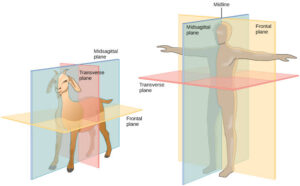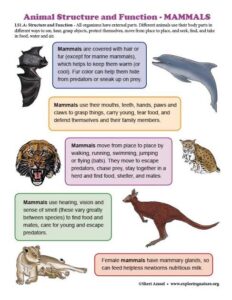Back to: ZOOLOGY 100 Level
I’m really glad to have you here again. You’ve been doing such a great job, and today’s topic is another exciting one that will open your eyes to how wonderfully the animal body is designed. We’ll be looking at the different tissues in animal bodies—where they are found and what they do. Imagine it like knowing where the electrician, the cook, the cleaner, and the security guard all work and what each of them is responsible for in a big house. That’s exactly how tissues work in the body!
Functions and locations in animal bodies
Epithelial Tissue
Epithelial tissue is found covering and lining the surfaces of the body. It works like a protective layer—just like your clothes protect your skin, epithelial tissue protects the body and internal organs.

Functions: Protection, absorption, secretion, and sensation.
Locations:
- The outer layer of the skin
- The lining of the mouth, nose, and throat
- The inner walls of the intestines and stomach
- The surfaces of organs and blood vessels
For example, when you eat pepper soup and feel the heat in your mouth—that’s your epithelial tissue responding!
Connective Tissue
This is the body’s strong support system. Connective tissue holds everything in place, connects parts of the body, and provides structure and transport. It’s like the blocks and beams holding a house together.
Functions: Support, connection, storage, and transport.
Locations:
- Bones (support and movement)
- Blood (transport of nutrients and oxygen)
- Cartilage (in joints, nose, and ears for flexibility)
- Fat (under the skin, for energy storage and warmth)
Even your ligaments and tendons, which hold your joints together, are types of connective tissue!
Muscular Tissue
Muscular tissue helps the body move. Whether it’s clapping, dancing, blinking, or digesting food—this tissue is doing the job.
Functions: Movement, contraction, and support for internal processes.
Locations:
- Skeletal muscles (arms, legs—for voluntary movement)
- Smooth muscles (walls of the stomach, intestines—for digestion)
- Cardiac muscle (only in the heart—for pumping blood)
So every time you smile or lift a bucket of water, thank your muscular tissue!
Nervous Tissue
This tissue is the communication network of the body. It sends and receives signals, helping you feel, think, and respond quickly.
Functions: Transmission of messages, coordination of body functions.
Locations:

- Brain (controls the body)
- Spinal cord (connects the brain to the rest of the body)
- Nerves (spread throughout the body—for sensations)
For instance, when you touch something hot and quickly pull your hand away, that’s your nervous tissue at work.
Summary
- Epithelial tissue covers and protects the body and internal surfaces.
- Connective tissue holds body parts together, supports them, and transports materials.
- Muscular tissue allows movement and powers actions like digestion and heartbeat.
- Nervous tissue sends signals throughout the body for quick responses and thinking.
Evaluation
- What are two places where epithelial tissue is found, and what does it do there?
- Give two examples of connective tissue and their roles.
- Which type of muscle is found in the heart, and what does it do?
- How does nervous tissue help you stay safe?
Keep going, superstar! You’re showing great understanding and effort, and I know you’re going to do even more in the next lesson. Keep your mind open, your curiosity alive, and remember—Afrilearn is right here with you, every step of the way. You’ve got this!
